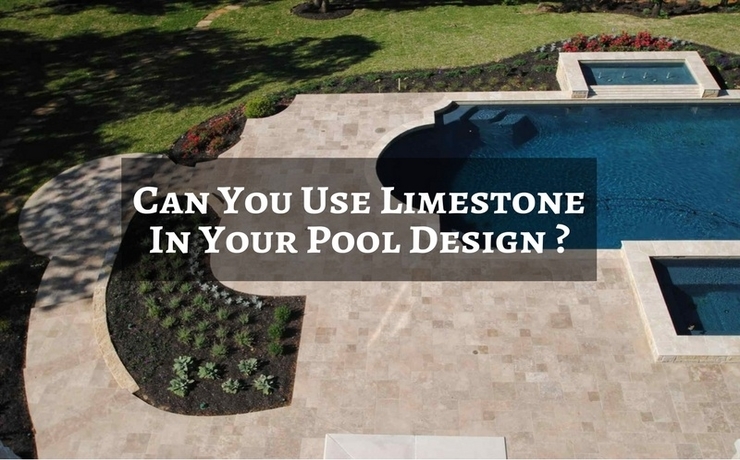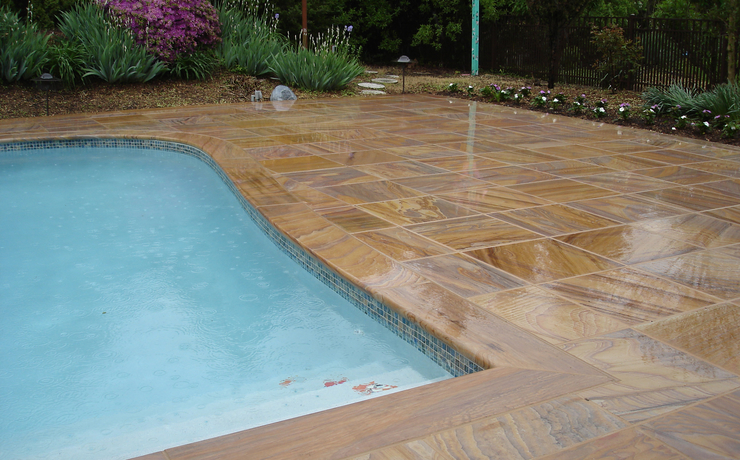Can You Use Limestone In Your Pool Design?

There’s just something about the look of limestone. It’s natural, and it reminds us of the cliffs of our shores, it’s something very organic, and very time-tested. You look at limestone, and you can tell that it has a story.
Many people choose to use limestone around the home and garden for these very reasons. It is a beautiful and timeless rock and is the star of many an outdoor entertaining area or poolside oasis. Limestone is a popular pick and goes with a dazzling array of different styles, combinations, and designs. It is as versatile as it is beautiful.
One of the questions that often pops up from people redoing their outdoor area and installing a pool is whether you can use limestone in your pool design. The colour of limestone is a brilliant offset to the colour of the water, so this question makes sense. It also makes sense in that “limestone cliffs by the beach” imagery. Limestone and water – a match made in heaven or not so practical in real life?

Let’s preface this by saying that you definitely can use limestone in your pool design – but there are some provisos that you need to follow so that it is practical and your limestone doesn’t degrade or cause other issues.
It is not a good idea to put limestone in your pool. You should not line your pool with limestone. Inside of your pool should be smooth to reduce the risk of any injuries occurring. However, outside of the pool, as well as the coping around your pool (the cap around the top of your pool) can be made of limestone.
Limestone pool decks and limestone pool casing is prevalent around the country. It’s a particularly attractive option as it offers great slip resistance in the wet, as opposed to other stone finished like polished marble. As everyone can attest to, a slippery pool area can have you howling on the floor in pain quickly, and limestone underfoot makes this slipping near impossible, even if the kids are careening around at top speed playing Marco Polo.
The most important part of using limestone for your pool casing or surrounds is to make sure that it’s sealed correctly for use around the pool. A heavy duty sealant is required to ensure that your limestone doesn’t degrade in the wet. While some limestone pavers and casings come pre-sealed, frequently you will need to add a sealer. Make sure to check what the go is with the type of limestone you’re looking at before you make a purchase. While it can be tempting to give it a go of DIYing the sealant, it’s usually best to leave it up to someone who does this professionally. The will know how to seal it with the correct sealer, amount of product, and have the appropriate applicators for the job.
The other thing to think about is whether you are planning on getting a saltwater pool or a chlorinated pool (or whether you already have one installed). Limestone can be particularly susceptible to degradation with salt water pools – depending on the toughness of the sealant that you use, too. If you like the look of limestone, you might like to consider getting a chlorinated pool instead – or making sure to really research that sealant. Because of the porosity of the rock, you might end up having to replace or refinish your limestone decking or casing sooner than you would have thought. Having to redo your decking after a couple of years of having your pool installed is a route that no one wants to go down.
Related Articles:





